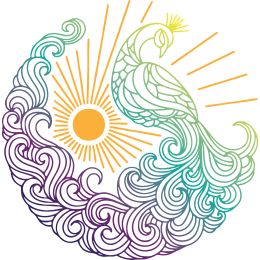What is Tarot
The Tarot is a symbolic language that reflects an unconscious process of personal development. The cards are a collection of the most basic patterns of human thought and emotion. The Tarot can be used to gain insight into the different activities and the surrounding circumstances of life. While highlighting the influences and energies you’re presently dealing with, the Tarot provides an objective outlook on situations and will point you in directions that are most beneficial.
The Tarot deck contains 78 cards that are subdivided into two groups: the Major Arcana and the Minor Arcana. The word arcane means hidden or profound secret, therefore Tarot cards express the underlining meaning to every experience. There are hundreds of decks to choose from, most of which follow the traditional division listed above. Each artist, of course, adds their own style and symbolism. The deck I am currently displaying is called Osho Zen Tarot.
The majors, also known as Trumps, consist of 22 cards and express themselves through archetypal experiences, with which most people can identify.
The minors consist of 56 cards that are then divided into 4 sets or suits: Wands, Cups, Swords, and Pentacles. Each suit is equivalent to the four elements that make up the universe: fire, water, air, and earth. These suits contain 10 numbered cards and 4 court cards: King, Queen, Knight, and Page.
Each card pertains to a different scenario. The minor cards are the external circumstances related to the archetypal experiences in the trumps, showing how we express or fail to express these underlining patterns in everyday life.
I do not believe that any special powers are required to interpret the cards other than intuition and a willingness to remain open and aware. It is human nature to project unconscious material onto objects or people in the environment as a way of understanding these qualities in one’s self. Therefore, everyone develops a specialized approach to reading the Tarot cards based on their own personal experiences and background.

